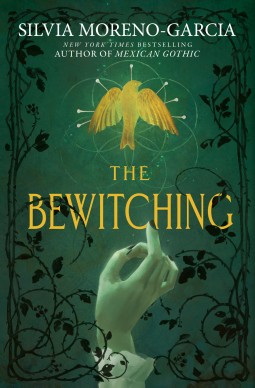 Silvia Moreno-Garcia is definitely rising to the top of my must-read authors list. Each story I've read of hers has not disappointed. They are historic, atmospheric, and scary. The latest I've read, "The Bewitching," stacks up well against my previous favorites.
Silvia Moreno-Garcia is definitely rising to the top of my must-read authors list. Each story I've read of hers has not disappointed. They are historic, atmospheric, and scary. The latest I've read, "The Bewitching," stacks up well against my previous favorites.
This horror novel is told from three points of view. First, there is Minerva in a close third. She is a college student in the 1990s, studying New England's stories of witches and ghosts for her thesis. Then, there is the narrative of her great-grandmother Alba (who had a hand in raising her), told in third person in the early 1900s. She lives on a farm in Mexico. Finally, there is the story told through diary entries in the first person of Beatrice Tremblay, a writer who attended the same school as Minerva during the Great Depression. Both Alba and Beatrice face a mystery and a malicious, existential threat to themselves or loved ones, and their knowledge helps Minerva face her own peril in her time.
Like Minerva, I was in college, studying literature, in the 1990s, so I identified with this heroine. She's independent, kind, and inquisitive. She doesn't balk in the face of danger but instead relies on her wits and the wisdom of her ancestors. Alba, though young and rather sheltered, has pluck and fortitude. Beatrice delves into the mysteries around her, refusing to give up even when failure seems the only option. Each woman is well-rounded and engaging. The antagonists are equally interesting, but I won't go into detail on those so as not to give away any spoilers. I enjoyed the unwrapping of the mystery at each level as well as the historic and folk-magic details. The scares here were not intense but thorough. There were some solid tropes—abandoned factory, taxidermy in the setting, lost documents, fictional New England setting—used well.
I always look forward to Silvia Moreno-Garcia's next work, and "The Bewitching" satisfied. I can't wait to see what's next. I received this ebook from NetGalley.
Comments
Post a Comment